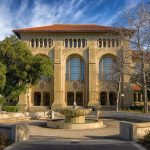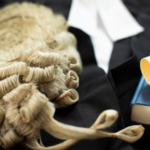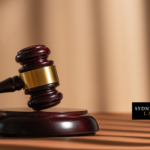Sparked by the Cronulla Riots: NSW Police Emergency Public Disorder Powers

Groups of young Anglo Australians began congregating along southern Sydney’s North Cronulla Beach at around 8 am on Sunday, 11 December 2005. Drinking heavily, cooking barbeques and draped in Union Jacks, the crowd had grown to around 5,000 strong by 10 am.
NSW police had been aware that locals had been planning racially motivated attacks since the previous Tuesday, as text messages had been intercepted regarding a planned day of “wog-bashing”. Later investigations found that 270,000 such messages had been circulated.
At around 1 pm on the day, the Cronulla riots began, when a Middle Eastern man exiting the beach was chased by a crowd and had to seek refuge in a bistro. From there, the situation escalated as “white Australians” hunted down people of “Middle Eastern appearance” and attacked them.
Incidents took place over the next two days, as Anglo youths continued to target victims – on occasions conducting mobile attacks from cars – while Middle Eastern youths began travelling out from the western suburbs, at times assaulting people and committing acts of vandalism.
And it was at this time that the Iemma government convened an emergency sitting of NSW parliament, in order to pass enhanced emergency public disorder laws, designed to provide police with enhanced powers to deal with situations, such as the riots in the Shire.
Emergency police powers
The Law Enforcement Legislation Amendment (Public Safety) Act 2005 (NSW) was passed on 15 December. Amongst other amendments, it inserted part 6A into the Law Enforcement (Powers and Responsibilities) Act 2002 (NSW), which is commonly referred to as the LEPRA.
Part 6A contains emergency powers that can be invoked in cases of large-scale public disorder. Public disorder is defined as “a riot or other civil disturbance that gives rise to a serious risk to public safety”. However, “large-scale” remains undefined.
The authorisation to exercise these “special powers to prevent or control public disorder in a public place” can be given by the NSW police commissioner or the assistant commissioner. Although, any officer can exercise these powers with the approval of an inspector or above if a situation calls for it.
A public place can include part of a premises that’s open to or used by the public, as well as a road or road-related area. These powers can be authorised for a maximum of 48 hours, unless a NSW Supreme Court order extends them.
Under lockdown
Section 87I of the LEPRA states that once emergency powers are invoked in a “target area” or road, officers can set up roadblocks at its entrances. And within the lockdown area, officers can stop and search any person or vehicle, without the usually required reasonable suspicion of wrongdoing.
Police can order any person in the target zone to identify themselves, under section 87L. And if they don’t, they can be sent away for up to 12 months and/or fined $5,500. And under section 87MA, police can order a group to disperse, with the threat of a $5,500 fine if anyone refuses to do so.
Section 87M of the LEPRA allows officers in lockdown areas to seize “a vehicle, mobile phone or other thing if the seizure and detention of the vehicle, phone or thing will assist in preventing or controlling a public disorder”. And these items can be held for up to 7 days.
There are also provisions around alcohol. Section 87B of the LEPRA stipulates that an officer of or above the rank of superintendent can require licensed premises or liquor outlets to close for up to 48 hours. And section 87C allows for establishing special alcohol-free zones for the same time limit.
Further amendments
The amendment bill also made changes to the Crimes Act 1900 (NSW). It inserted section 59A into the Act to create the crime of assault during public disorder, with applied penalties higher than that for similar assaults committed outside of emergency situations.
An individual convicted of a public order assault not occasioning actual bodily harm faces up to 5 years prison time, whereas an assault involving bodily harm carries up to 7 years. And the penalty applying to riot was increased to 15 years, while the penalty for affray increased to 10 years.
Section 8D was inserted into the now repealed Bail Act 1978 (NSW). It introduced a presumption against bail for offences committed during public disorder. This is not contained in the current Bail Act 2013 (NSW), however there are now a range of offences where bail is automatically refused.
An early expansion
Today, the sole NSW police watchdog – the Law Enforcement Conduct Commission (LECC) – is required to report on police use of 6A emergency powers. And the LECC 2018-19 Annual Report states that these powers haven’t been used since March 2011.
A September 2007 NSW Ombudsman report on the powers found that they’d been exercised on four occasions by then. This included within a huge target area the weekend following the Cronulla riots. This contained 1.3 million residents, who police were entitled to randomly search at that time.
The consolidation of state police powers under the LEPRA was a 1997 Wood Royal Commission recommendation. Although passed in 2002, the legislation didn’t come into force until 1 December 2005, just two weeks prior to the introduction of the enhanced police public disorder powers.
Applied during protests
In his first assessment of the laws, then NSW Ombudsman Bruce Barbour raised the potential for police to use these emergency powers at “demonstrations, assemblies and protests” as being of “particular concern”.
And indeed, NSW police has invoked these powers on one occasion for a peaceful protest. At the 2008 Camp for Climate Action protest against the expansion of the Newcastle coal port, police authorised the use of the emergency laws.
The Camp for Climate Action involved a week of nonviolent direct actions, which NSW police had been aware of for months prior, yet had done nothing to prevent. And as the main protest march was about to take place, officers swept in confiscating items and searching people at will.
So, as climate actions across the state are on a significant rise at the moment, there remains the possibility that once again NSW police will utilise these special powers in relation to climate activists, who are peacefully taking a stand in public.








